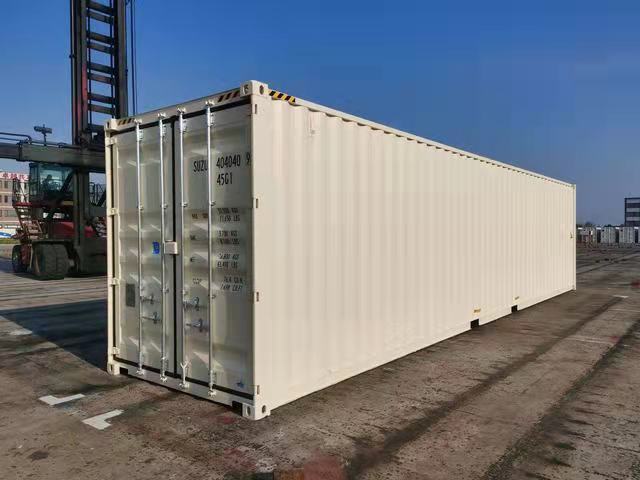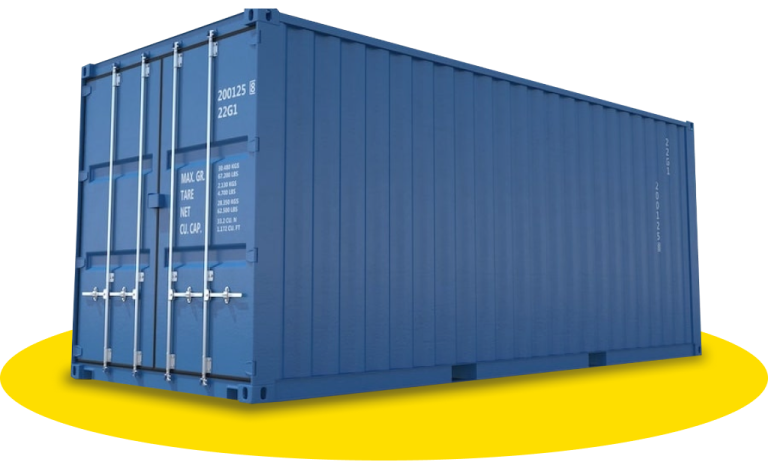Everything You Need to Know About the New Shipping Container 40 x 8 x 9.6 for Emergency Housing
Everything You Need to Know About the New Shipping Container 40 x 8 x 9.6 for Emergency Housing
Blog Article
The Ultimate Overview to Choosing the Right Shipping Container for Your Needs
When it concerns selecting the ideal delivery container, recognizing your certain demands is important. You'll want to take into consideration elements like dimension, kind, and material to guarantee you make the very best option. From standard dimensions to specialized alternatives, there's a great deal to discover. And also, budgeting for both the container and any alterations can make a large distinction. Let's damage down the key elements to aid you locate the best fit for your requirements.
Recognizing Delivery Container Sizes
When you're selecting a delivery container, understanding the various dimensions offered is critical for making the appropriate choice. Shipping containers usually come in conventional sizes of 20 and 40 feet, however you'll likewise locate other dimensions. Knowing the dimension you need depends on what you intend to store or transport.If you're moving smaller things, a 20-foot container may be perfect, while larger shipments typically need a 40-foot container. The elevation can also vary; high cube containers provide extra upright space, which can be valuable for taller goods.Before determining, gauge your cargo, and consider exactly how much area you'll require for filling and discharging. Always consider prospective future demands-- going with a somewhat larger container may conserve you inconvenience down the line. Ultimately, choosing the right size will boost efficiency and guarantee your things are secure during transit
Sorts Of Shipping Containers Available
There are a number of kinds of delivery containers offered, each made for particular purposes and cargo requirements. The typical completely dry container is versatile, perfect for basic cargo. If you're delivering subject to spoiling goods, think about a refrigerated container, which keeps a controlled temperature. For large things, high cube containers use added elevation, suiting taller loads.If you require to deliver heavy equipment or equipment, level rack containers provide a strong base without walls. Meanwhile, open-top containers enable very easy loading of tall cargo, with a detachable tarp covering for protection. If you're looking for flexibility, take into consideration a collapsible container that can be conveniently stored when not in use.Lastly, specialized containers like container containers are made use of for liquids, while vented containers are created for bulk cargo that needs air flow. Knowing your cargo kind will assist you select the right container to meet your delivery needs effectively.
Material Factors To Consider for Toughness
When selecting a delivery container, the product plays an important function in its toughness. You'll intend to consider the advantages of steel versus light weight aluminum, especially concerning rust resistance. Understanding these aspects can assist you make a much more informed choice for your shipping requires.
Steel vs. Aluminum Containers
How do you select between steel and aluminum containers for your delivery needs? Begin by taking into consideration sturdiness. Steel containers are robust and deal excellent strength, making them suitable for hefty loads and rough problems. They stand up to damages from impacts and are typically more economical, which can be a significant element for budget-conscious buyers.On the other hand, light weight aluminum containers are light-weight, which can save you on delivery costs. They're much easier to maneuver and are a wonderful choice if you require to transport products frequently. Nevertheless, aluminum is normally a lot more expensive and less robust than steel. Consider your certain demands thoroughly, including weight, cost, and the kind of freight you'll be shipping, to make the appropriate selection for your scenario.
Rust Resistance Elements
Picking the best material doesn't simply entail weight and price; rust resistance plays a substantial duty in sturdiness. When selecting a delivery container, consider the atmosphere it'll face. Steel containers, while solid, can corrosion if not appropriately treated. Look for alternatives with protective coverings or galvanization to enhance their lifespan. Light weight aluminum, on the various other hand, provides natural rust resistance, making it excellent for coastal areas or damp conditions. Nonetheless, it can be more expensive. Additionally, evaluate the container's use-- if it'll be exposed to chemicals or rough weather condition, prioritize materials that can endure these conditions. Purchasing a corrosion-resistant container now can conserve you from costly repair work or replacements down the line. Pick intelligently for long-lasting advantages.
Modifications and Modification Options
Shipping containers aren't just for carrying goods; they can be transformed to meet your particular needs via different alterations and customization alternatives. You can convert a standard container right into a relaxing office room, a temporary retail shop, and even an individual health club. The possibilities are virtually endless.Think regarding adding windows, insulation, or air flow to enhance convenience. You might likewise think about electric circuitry, pipes, and even customized shelving to improve capability. If security's a concern, enhanced locks can provide peace of mind.For aesthetic appeal, you can repaint the container or add a distinct design to make it attract attention. Don't forget flooring options-- whether you desire sturdy plywood or something a lot more sophisticated, it can browse this site boost the space.Ultimately, customizing your delivery container to match your requirements can improve usability and create an one-of-a-kind environment that reflects your design.
Assessing Your Transportation Requirements
When it pertains to utilizing your modified delivery container, recognizing your transport needs is crucial. Start by determining what you'll be shipping-- whether it's hefty tools, retail products, or personal things. Each kind of freight has different requirements concerning size, weight, and accessibility.Next, think about the range and mode of transport. Are you delivering locally, across the country, or globally? This influences the container's style and capability. If you're utilizing vehicles, assure your container fits standard measurements for easy loading and unloading.Additionally, assume about transportation problems. Will your things require unique protection from weather condition or temperature level fluctuations? If so, you could need insulation or ventilation features in your container.Lastly, examine just how often you'll be transferring goods. Constant deliveries might call for a more resilient and functional container to meet continuous needs. By dealing with these aspects, you'll be well-prepared to select the right delivery container for your demands.
Budgeting for Your Shipping Container
Setting a spending plan for your shipping container is necessary for making sure a smooth buying procedure. Identify just how much you can afford to spend. Prices can differ significantly based on dimension, problem, and type. New containers normally cost a lot more, however used ones can supply substantial savings.Next, consider any kind of additional expenses you may sustain, such as transport costs, shipment charges, and adjustments. If you prepare to customize the container, consider those costs as well. Research different vendors to contrast costs and find the very best deal that meets your needs.Don' t forget to include any authorizations or policies that might put on your purchase and use the container. By clearly outlining your spending plan, you'll be much better prepared to make informed decisions, guaranteeing learn this here now you get the ideal container without breaking the financial institution.
Upkeep and Treatment for Durability
To guarantee your delivery container lasts for several years, regular maintenance is essential. Start by evaluating the exterior for corrosion, dents, and damages. If you identify any kind of problems, resolve them instantly to stop further wear and tear. Clean the container periodically, both throughout, to eliminate dust, debris, and moisture that can lead to corrosion.Ensure the doors seal properly and oil the hinges to avoid rust and sticking. If you're utilizing the container for storage space, think about including ventilation to lower moisture and mold and mildew growth. For extra defense, use a Recommended Reading rust-inhibiting paint or sealant annually.If your container's located in a severe setting, like seaside locations, you may need to increase maintenance frequency. Maintain an eye on the floor covering, as well; any type of signs of wear ought to be repaired immediately. With these easy steps, you'll extend the life of your shipping container substantially.
Regularly Asked Questions
How Do I Discover a Trusted Shipping Container Provider?
To find a dependable delivery container supplier, start by investigating online evaluations, asking for suggestions from friends or sector calls, and comparing prices. Always inspect their qualifications and assurance they use high quality containers that meet your requirements.

Can I Lease a Shipping Container Rather Than Buying?
Yes, you can definitely lease a delivery container as opposed to getting one. Several suppliers use rental alternatives, which can conserve you cash and offer adaptability if you only need it for a brief duration.
What Permits Are Needed for Container Placement?

Are Shipping Containers Weatherproof and Suitable for Outdoor Storage?
Yes, delivering containers are generally weatherproof, made to stand up to extreme problems. Their robust construction maintains your products safe and secure and dry, making them appropriate for outdoor storage space. Simply assure proper ventilation to avoid moisture accumulation inside.
Just how Do I Transport a Shipping Container When Acquired?
Report this page